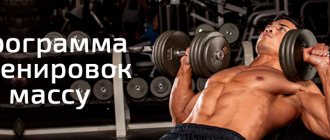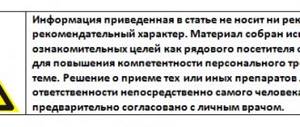Fitness and bodybuildingMethods and techniques
Learn what supercompensation is and how you can use it to customize your training cycle for maximum results.
Author:
Jason Maxwell
Not a day goes by that I don’t feel an irresistible desire to pick up cold iron. Feeling the pressure of the knurled bar of a loaded barbell is my drug of choice, and I think it is yours too. Luckily, hard work pays off—and we have scientific proof. These days, it's normal to go to the gym and push yourself to the point of exhaustion and pain. At a subconscious level, you know that you will inevitably become bigger and stronger, and “overtraining” is as much a deception as a stripper’s breasts (and even more of a deception than her attention during a lap dance).
If you train conscientiously, you will be rewarded. And all this thanks to supercompensation.
What is supercompensation in sports?
Supercompensation or super-recovery is a phase of the recovery process in which the level of physical capabilities of the body exceeds the level before the onset of the load.
Example: there is an initial indicator at which an athlete is ready to perform a particular load. During this same load, muscle fatigue occurs due to depletion of glycogen and creatine phosphate reserves. This period means a loss of strength, that is, the indicator on the graph falls. Then comes a period of recovery, in other words, rest, during which the physical capabilities of the body increase and reach their peak, which exceeds the initial value, compensating for it. This is supercompensation. Thus, during this period, the athlete’s capabilities are at their peak and he can perform a load that exceeds previous indicators.
It is logical to assume that after each workout the body becomes stronger or more resilient, for example, in powerlifting or running, if training is carried out during the period of supercompensation. This explains that the athlete becomes better with each training session, but it is important to organize the correct training and rest regime.
If you ignore the super-recovery phase, you can either become overworked or not develop at all.
This theory was studied by physiologist Karl Weiger at the end of the nineteenth century, calling it the “law of supercompensation,” and in the mid-twentieth century Yakovlev became his follower, who continued to study the training effect.
To make it clearer, on average, supercompensation occurs 2-3 days after the load, but these indicators are individual. This explains why it is better to use a three-day split in bodybuilding, especially for beginners. This is because the body is fully restored and is ready to further increase its level of fitness.
What happens if you ignore such a phenomenon as super recovery:
- If you do not wait for the onset of that very supercompensation and train diligently every day, then the fitness indicator will constantly decrease and lead to the opposite effect - overtraining. An exhausted body will lose its capabilities that it initially possessed. Professional athletes often hit a training plateau because of this.
- If you skip supercompensation and train rarely - 1-2 times a week with low intensity, then the body simply will not increase its fitness and will remain in place. Therefore, this is not a suitable mode for bodybuilding or powerlifting.
Cyclic training - a solution to the problem of supercompensation
The solution to the problem of supercompensation is a competent training program designed taking into account the individual characteristics of the athlete.
One of the most important principles of such a program is the cyclic alternation of the intensity of the load that different muscle groups receive. The essence of cycling in training comes down to dividing the sports program into separate periods, which are repeated with varying degrees of intensity: light, medium, high. The ideal option is split training, when the program is divided into several training days, during which the athlete works a separate muscle group.
It is also worth considering that for different parameters (such as strength, endurance, muscle volume, etc.) the period of supercompensation is different and requires loads of different intensity. Therefore, it is split training with cyclic changes in load that ensures the uniform development of all trained parameters.
Recovery phases
- The first phase of the cycle is receiving the load. During exercise, fatigue always occurs, that is, the pre-load indicator decreases.
- The second phase - a recovery period begins, which can be divided into the following phases: recovery , in which the indicator of physical capabilities increases and reaches the level of the initial indicator; supercompensation - an increase in the initial indicator by 10, or even 20%.
- Return – after super-recovery, there is a return to the initial indicator of the first phase of the cycle.
This is an example of one cycle - load and recovery.
If you constantly train at the onset of the supercompensation phase, then the last return rate will grow and exceed the previous initial rate.
SUPER COMPENSATION LAW
NEWS LIBRARY HUMOR ENCYCLOPEDIA LINKS SITE MAP ABOUT THE SITESUPERCOMPENSATION LAW is a biological law formulated by K. Weigert. It consists in the fact that the body, in response to the waste of substances or loss of tissue (within certain limits), reacts with the formation of new similar substances and tissues, in quantities exceeding what was lost. S. z. is of great importance for understanding the functional and biochemical changes that occur in the body under the influence of training (see Sports training). Restoration of energy sources expended during muscle activity goes through a number of phases, returning in waves to the original level (Fig. 1).
Rice. 1. Manifestation of the law of supercompensation in the expenditure and restoration of energy sources during muscle activity
If repeated load is applied in the phase of incomplete restoration of energy sources, it leads to even greater depletion. If it is given in the supercompensation phase, it ensures the achievement of higher levels of functional and energetic capabilities of the body than during rest after the first work. Systematic repetition of such a load leads to the consolidation of these high levels, which underlies the formation of a state of fitness. If, finally, repeated load is used after the supercompensation phase, then it does not have a significant training effect (Fig. 2). S. z., therefore, provides a biological basis for such principles of sports training as repetition and regularity of loads and the correct balance of work and rest. Rest should be neither too little nor too much. The magnitude and duration of the supercompensation phase depend on the magnitude and intensity of the processes of consumption of energy sources. Within certain limits, the higher the intensity of expenditure, the faster supercompensation occurs and the longer it persists.
Rice. 2. The relationship between work and rest during the training process: I - repeated load is applied when the consequences of previous loads have been completely smoothed out. The result is no changes in the functional level. II - repeated load was applied against the background of an unfinished recovery process. The result is a decrease in the functional level. III - repeated load is applied against the background of increased performance (super-recovery). The result is an increase in functional level
This is one of the reasons for the widespread use of high-speed loads in sports training, in which the intensity of consumption of energy sources is especially high. However, if the intensity of their expenditure is too high, as well as during prolonged work that causes severe fatigue, the recovery processes slow down and the amount of supercompensation decreases.
As training increases, the same work, causing less and less functional and biochemical changes, leads to less and less supercompensation. Therefore, the amount of load during training should increase. According to the N. z. There is not only an increase in the content of energy sources, but also working muscle hypertrophy. During work, muscle proteins are consumed to some extent, and during rest they are intensively built. S. z. extends to enzyme
: after the suppression of their activity there is usually an increase in it.
Literature: Yakovlev N. N.
.
Essays on the biochemistry of sports. M., 1955. Yakovlev N. N., Korobkov A. V. and Yananis S.
V. Physiological and biochemical foundations of the theory and methodology of sports training. M., 1957.
Sources:
- Encyclopedic dictionary of physical culture and sports. Volume 3. Ch. ed. - G. I. Kukushkin. M., 'Physical education and sport', 1963. 423 p.
How to properly build a workout for supercompensation
The most suitable method of strength training is split, when 2-3 muscle groups are loaded in one workout. This way, the muscles have time to recover before the next workout.
For constant progress, the load must be increased, which will hinder the achievement of muscle adaptation. But you also need to increase the load correctly, namely, resort to cycling.
Cycling involves gradually increasing the difficulty of the training process throughout the week, followed by a decrease at the beginning of the next training week. A constant increase in load, for example working weight, every subsequent week also plays a role here.
Example:
- Monday – light training.
- Wednesday – moderate training.
- Friday is a tough workout.
Also, during the week, a working weight of 40% of the one-repetition maximum is selected. The second week goes exactly the same way, only the working weight increases to 50% of the repeated maximum and so on up to 80%.
Returning to moderate exercise allows you to continually progress without reaching overtraining, which leads to a training plateau.
Supercompensatory unloading
Once you get to overload, the magic begins. You automatically reduce the training volume by 50-70%, and increase the intensity by 5%. For example, if you squatted 100kg and did 5 sets of 10 in the last week of the overload phase, you should reduce the volume to 2 sets of 10 and increase the working weight to 105kg (or more). This unloading lasts a week or even less.
The goal of increasing intensity is to continue to generate training stimuli despite the drastic reduction in volume required for recovery. From the graph (above) you can see that recovery is the first step towards supercompensation. In fact, it's absolutely essential if you want to build muscle quickly and reap the benefits of every muscle-building microcycle. And since recovery is so important in the phase of supercompensatory unloading, it would not be amiss to remind you of some recovery techniques - sleep and nutrition.
Sleep and nutrition are the Yin and Yang of your training program. You've heard about this a million times already, so reminding you one more time definitely won't hurt. Here's what you need to know about recovery during the supercompensatory deloading phase:
- Get at least 7 hours of sleep every night.
- Continue to eat the same way as during the overexertion phase. For example, if you were consuming 3,500 calories as 40% carbohydrates, 30% protein, and 30% fat, you would need to consume the same 3,500 calories with the same macronutrient ratio during the supercompensatory deloading phase.
- Take fish oil every day and BCAA between meals.











